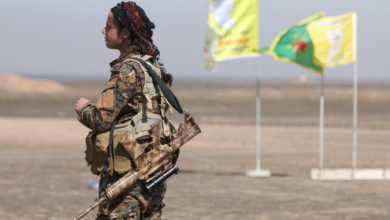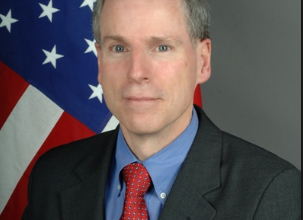
How the Syrian uprising led to ISIS’ rise, not democracy (Part 1)
This article is a first in a three-part series exploring the erosion of the 2011 Syrian uprising
When mass protests swept through Syria in 2011, its motives were not to establish a caliphate based on religious laws and institutions. The uprising was galvanized by youths, who realized that there is a great disparity between their living status and those in the West.
They craved democracy, freedom of speech, equality and Western values. They have shaped their vision based on bilingual liberal education, and a diverse upbringing with strong Western influence. These youths, however, do not have sufficient expertise to determine effective, enduring methods to realize their aspirations.
Syrian intellectuals also have a vision of progressing people’s lives through social, intellectual and gender reform. However, these elites do not realize the difficulty in achieving this amid a wide gap between them and the masses, whose lives for decades have been shaped by dynastic dictatorship.
Submission and loyalty
These masses developed an interdependent relationship with dictators: bread and security in return for submission and loyalty. Dictatorship fostered this wide gap between the masses and elites through the latter’s disempowerment, arbitrary detention and exile, as well as a lack of freedom of speech. This made the masses afraid to be influenced by the elites, and alienated the latter, who were obliged to either cooperate with the oppressors for survival, or face exile and persecution.
The violence of the Syrian uprising transformed Islamist discourse from a rebellion by the Syrian people to a rebellion of Sunnis
Dr. Halla Diyab
With the onset of the revolution, people joined marches and chanted statements against the atroci-ties committed by those in power. For these people, it was about rebelling in the name of dignity and justice. However, they have no concrete plans for the future, and so can be easily manipulated to join any ideology that calls for rebellion in aid of the oppressed. This group is highly impression-able and driven by emotion.
The Islamists, comprising angry, emotionally-driven sects of Syrian society as well as foreigners, have found an opportunity to take revenge on the secular nationalism that has for decades suppressed them. They are bound by the rhetoric that Islam is the solution to social, economic and po-litical injustice. Theyinclude supporters of the Muslim Brotherhood and the Salafi Ansar al-Shariah, which calls for sharia law to be implemented.
They are not necessarily violent or see violence as a way to further their goals, but are bitterly op-posed to the governance of the al-Assad family, which has dealt brutally with Brotherhood since the 1980s. Bashar al-Assad’s father Hafez in March 1973adopted a constitution that deleted any reference to Islam as the state religion. Islamists view themselves as separate from Arab secularists, who have chosen loyalty to nationalism over Islamism.
Islamists have been attracting moderate Muslim youths, who have witnessed the fall of 20th-century Arab secularism and the pan-Arab nationalism of late Egyptian President Gamal Abdel Nasser. These youths see a revival of Muslim preachers and leaders post 9/11, who publicly took on the responsibility of reforming the international image of Islam and Muslims.
Muslim divisions and social media
The post-9/11 era has given rise to influential Arab preachers, such as moderate TV personality Amr Khaled, Sufi scholar Habib Ali Jifri, Salafist preacher Mohammad al-Arifi, and Brotherhood advocate Tareq Mohammad al-Suwaidan.
They are part of a narrative seeking to replace the Arab nationalist-secular narrative. The 2003 U.S. invasion of Iraq, and the diminishing credibility of secular Arab nationalists, created a vacuum, and Islamists see this as an opportunity to gain political dominance.
However, Sunni-Shiite division was not a primary factor in the discourse of leading Muslim preachers post-9/11. The violence of the Syrian uprising transformed Islamist discourse from a rebellion by the Syrian people to a rebellion of Sunnis. Islamist Sunni online forums, social media and websites posting photos and videos of regime abuses fuelled Sunni-Shiite division.
Online videos showed regime troops forcing captured Syrian Sunni fighters to say “la Illah ila Bashar al-Assad” (no God except Bashar al-Assad). Videos also showed Syrian men obliged by regime offic-ers to pray on his photos. Such videos feed sectarianism while ocial media had started to be considered a central source for the Arab Spring’s newfound freedom of speech.
alarabiya.net



